What is a Network?
A computer network is a collection of computers and other peripheral devices that are connected in order to exchange data and hardware resources. Computer networks aid in sharing of information, sharing of resources, storage efficiency, and timely communication, among other things.
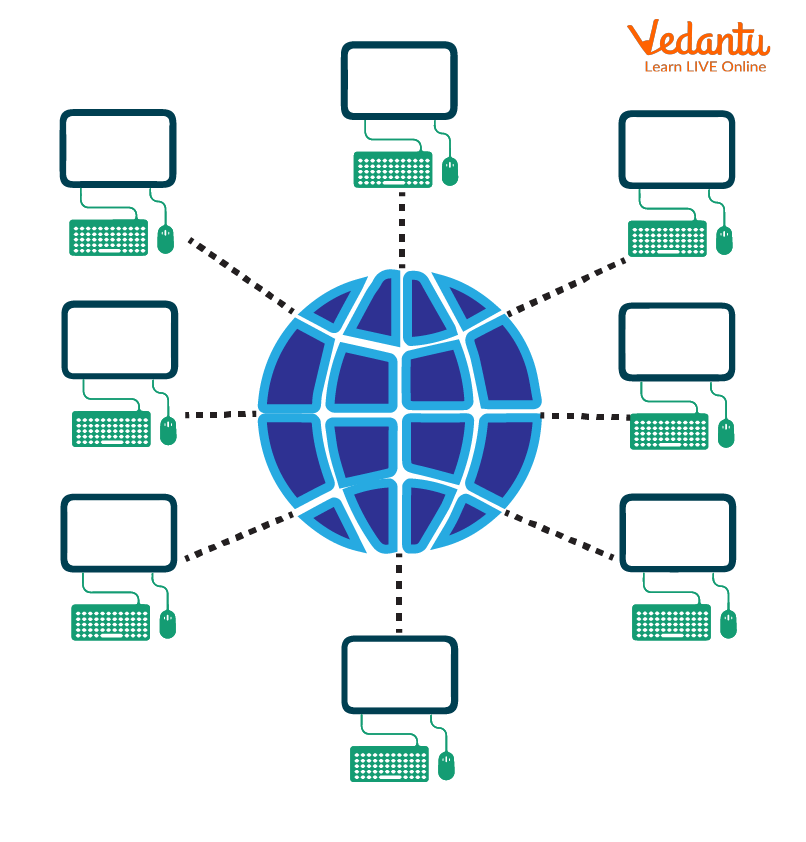
Type of Networking
The size of a computer network defines its classification. A network can be tiny, containing only one system, or as large as needed. The following are the various types of computer networks:
PAN
LAN
MAN
WAN
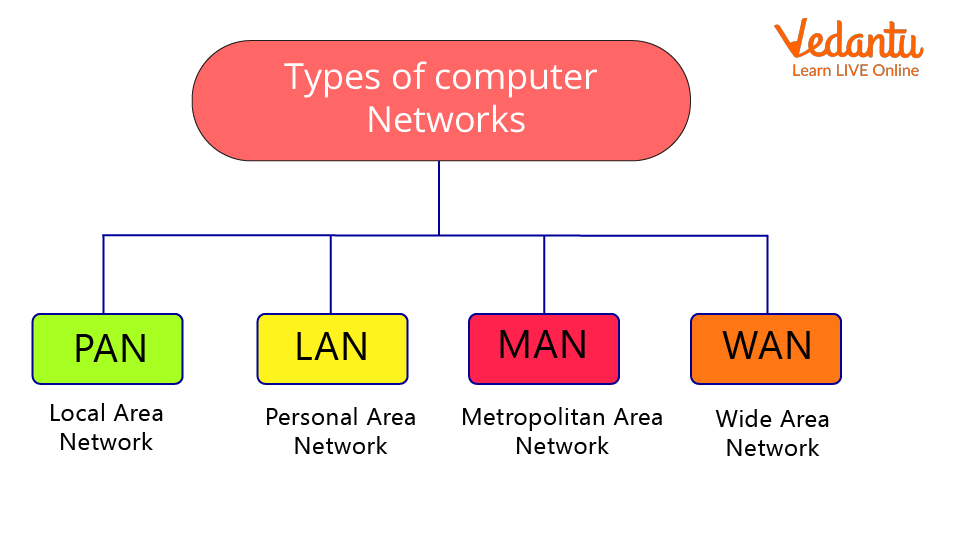
PAN (Personal Area Network)
It is the smallest network of computers.
Bluetooth or other infrared-enabled devices could be used to connect devices.
It has a 10-metre range of connectivity.
It can cover up to 30 feet in diameter.
PAN network enables a single person's personal devices to connect with each other.
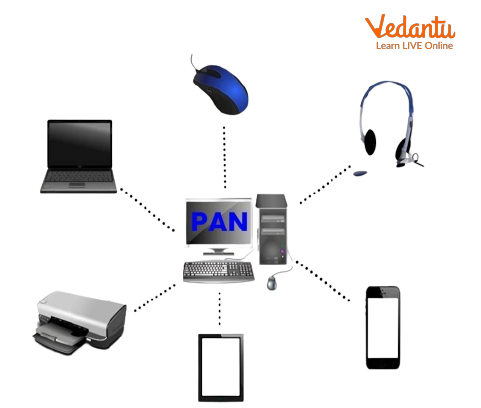
Types of PAN (Personal Area Network)
Personal Area Network is divided into two categories.
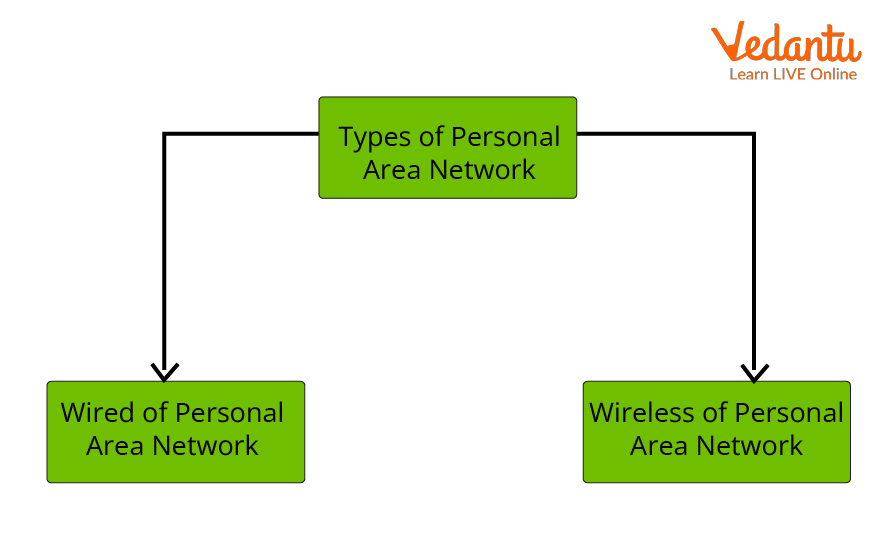
Wired Personal Area Network: The USB is used to create a wired Personal Area Network.

Wireless Personal Area Network: Wireless Personal Area Networks (WPANs) are the connection networks created by combining wireless technologies like WiFi and Bluetooth. It is a network with a short range.
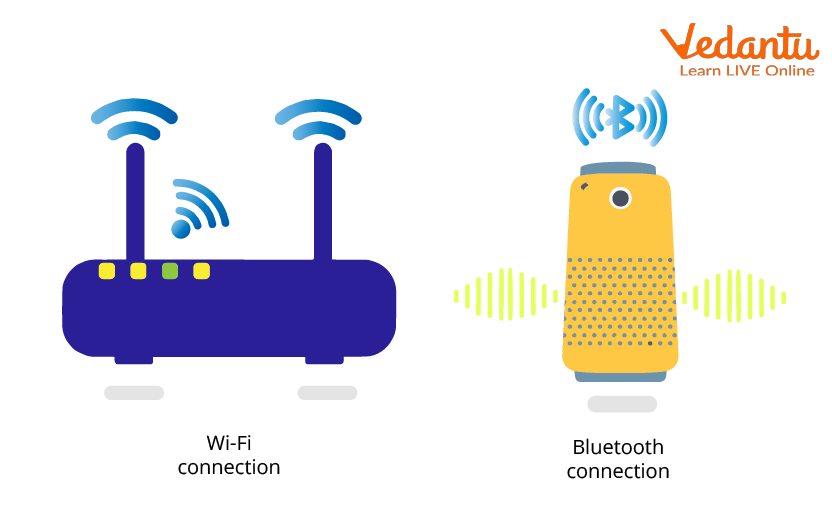
LAN (Local Area Network)
In a small network, such as a building or a small office, systems are connected.
LAN network is low cost.
Token-ring technology is being used.
Two or more personal computers can be connected with nodes (wires or cables).
Data transfer is quick and well-rated.
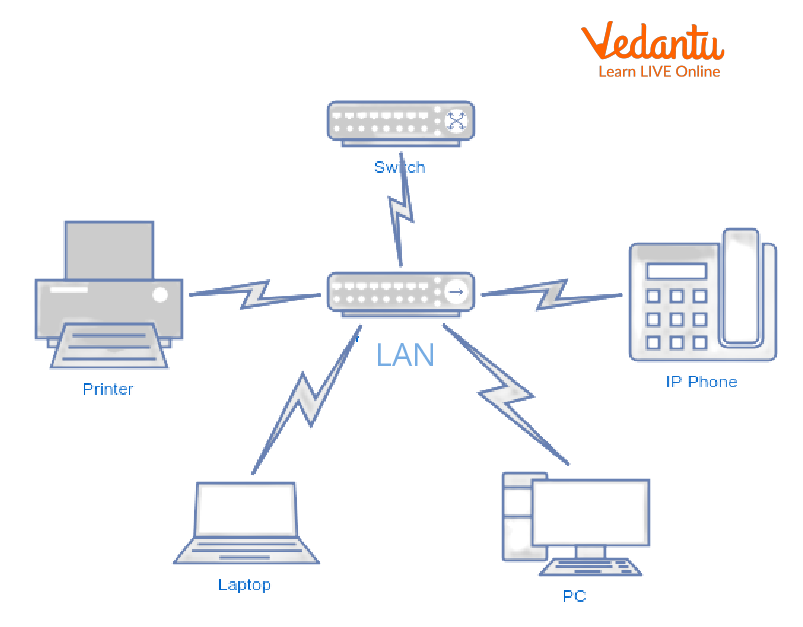
MAN (Metropolitan Area Network)
Cable TV Connection is an example of a network that can be connected within a city.
Ethernet, ATM, Token-ring, and FDDI are some examples.
MAN network has a wider range of applications.
This network interface could be used to connect citizens to various organisations.
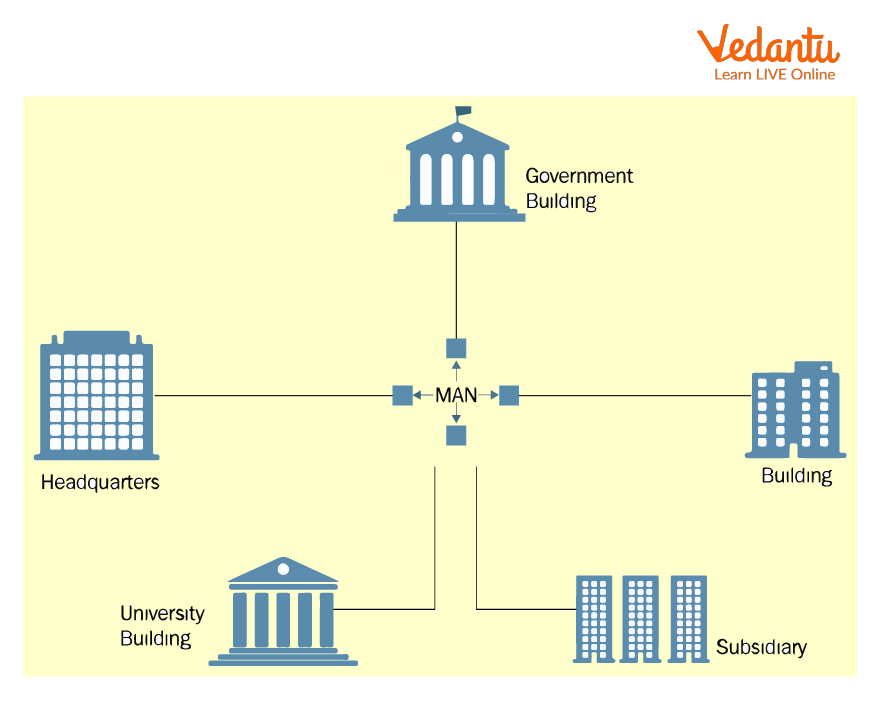
WAN (Wide Area Network)
A network that spans a country or a larger group of individuals.
The WAN network connects telephonic connections as well.
The internet is the world's largest WAN, and it is mostly utilised by government entities to handle data and information.
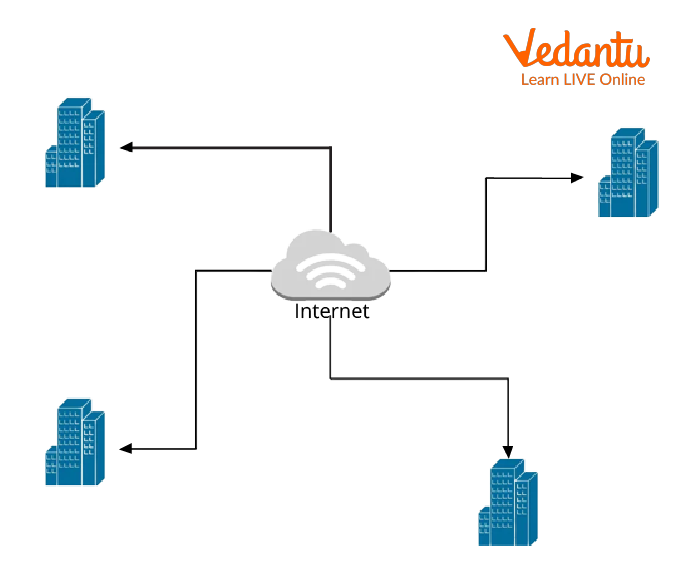
Difference Between LAN, MAN, and WAN
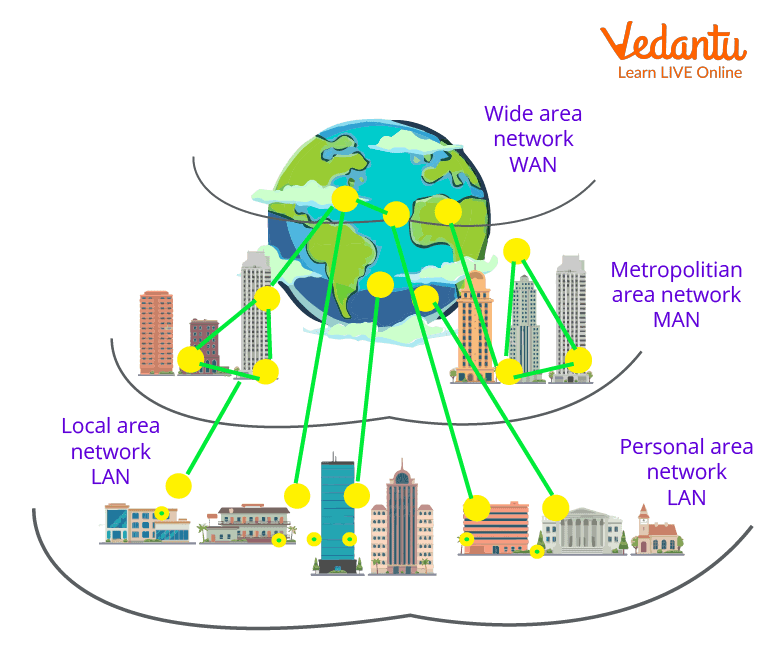
Fun Facts:
There is a treatment centre in China for people who are addicted to the internet.

The internet would weigh about 2 ounces (50 grams). How does one calculate the internet's weight? Russel Seitz, a physicist, estimated the weight of billions of electrons that make up the data we actually send and forth every day.

ATMs, which have been around since 1974, are the first major Internet of Things objects.

Summary
In this article, we have discussed the concept of a network and its different types. First, we discussed the definition of a network, and then the characteristics of its different types. We have learnt the differences between various types of networks. To know more about computer networks, their types, or any other topics related to computer networks you can check the connection network pdf or visit our website.
Learning By Doing
1. Help Miss Jennifer in completing the chart about the types of networks.
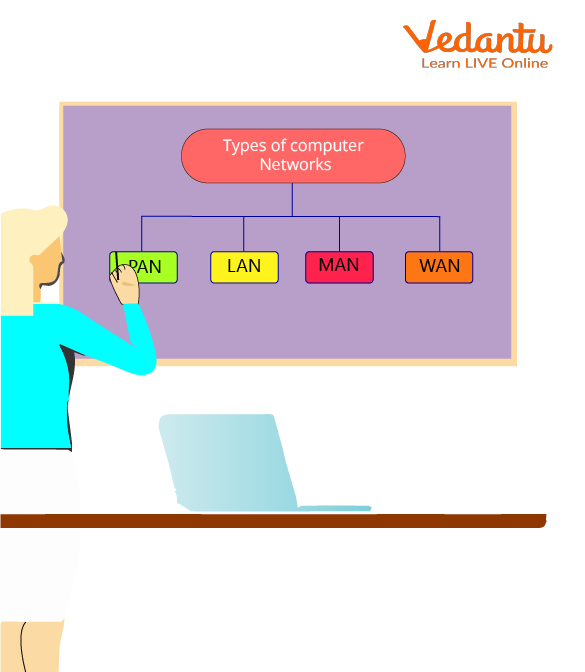
2. Ahh! Sam appears puzzled. Let's figure out what happened to Sam. Oh, these two pictures came from Sam's computer book. Guide Sam in identifying the various types of networks. Then describe two uses for each.
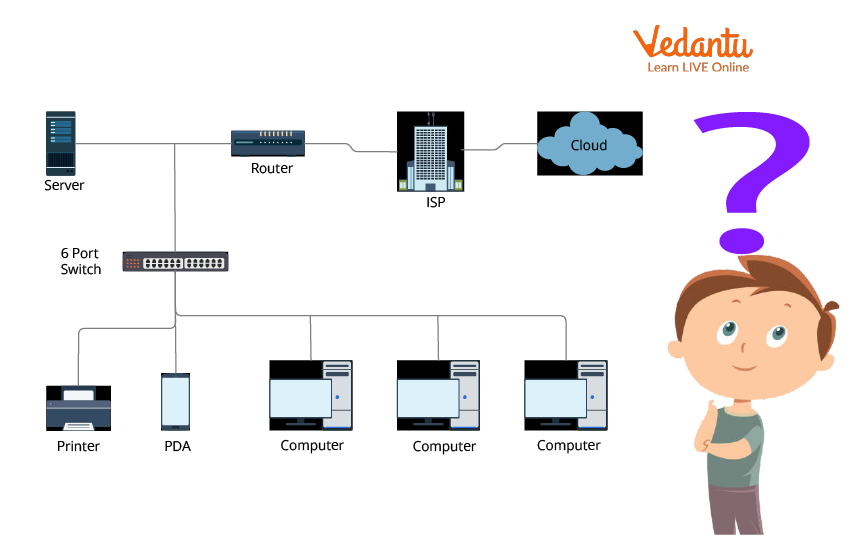
3. Rena watched TV and discovered that a water supply system is a network. Support Rena in finding 5 real-life network examples.



FAQs on Different Types of Networks
1. What is a network?
A computer network is a collection of computers and other peripheral devices that are connected in order to exchange data and hardware resources.
2. Write 3 differences between Local Area Network and Wide Area Network.
Local Area Network(LAN) | Wide Area Network(WAN) |
The data transfer rate on a LAN is higher. | When compared to LAN, WAN has a lower data transfer rate. |
The LAN is owned privately. | Private or public ownership of a WAN is available. |
The LAN has a high speed. | The WAN is slower than the LAN. |
3. List any 4 advantages of MAN.
Advantages of MAN network are as follows:
When compared to WAN, it provides better security.
In comparison to WAN, MAN requires fewer resources.
Implementation costs are cheaper.
Increases the rate at which data is sent.





